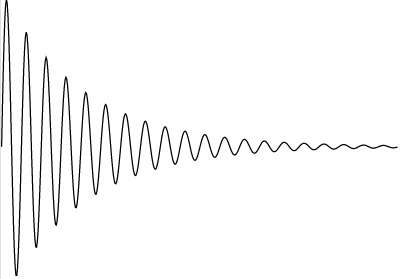Physicists discover new way of resonance tuning for nonlinear optics

A research team from ITMO University and the Australian National University has discovered that different metasurfaces exhibit the same behavior provided a symmetry breaking is introduced to their unit cells "meta-atoms." Asymmetry of meta-atoms results in high-quality (high Q) resonances in the transmittance spectra of metasurfaces. Such resonances are capable of multiple amplification of external signals. By manipulating the asymmetry, scientists were able to control the resonances and thus an optical response, which is highly desirable for practical applications. The results of this research were published in Physical Review Letters.
Quality factor (the so-called Q factor) is one of the most important characteristics of a resonant system. It determines the effectiveness of light-matter interaction and amplification of external signals. It shows how well the structure can trap light. When the sample is reduced in size, especially in thickness, its quality factor is also reduced significantly, making it unsuitable for practical applications.
In their new research, a team of physicists from ITMO University and the Australian National University, led by Prof. Yuri Kivshar, has revealed a new physics of high-Q resonances. Scientists found that the high-Q sharp resonances are manly determined by asymmetry of meta-atoms, and they almost do not depend on the thickness of metasurfaces and the type of materials demonstrating a universal behavior for all types of such metasurfaces. Therefore, metasurfaces with broken symmetry can be used to create thin (less than the length of light) and highly efficient sensors, lasers, and nonlinear radiation sources.
More importantly, the researchers proved that high-Q resonances in asymmetric metasurfaces are governed by bound states in the continuum. The latter are nonradiative states that appear when several resonances in a system interact in the regime of destructive interference suppressing the radiative losses.
"We have been studying bound states in the continuum for two years as part of a project supported by the Russian Science Foundation. At some point we realized that the nature of high-Q resonances in metasurfaces is related to the physics of bound states of the continuum. It turns out that, by introducing an asymmetry, we can destroy bound states in the continuum and convert them to high-Q resonances. We analyzed a dozen asymmetric systems, found in various sources, in great detail and were able to show that the previously described effects were caused by bound states in the continuum," says Dr. Andrey Bogdanov, a research fellow at the International Research Center for Nanophotonics and Metamaterials at ITMO University.
"The most important result of our work is that we were able to aggregate and summarize the results of a large number of works from various fields of photonics and radiophysics, all of which only have two things in common: the structure, which is an asymmetric metasurface, and the nature of observed phenomena, that of sharp and narrow resonances in spectral response. In older works, this was explained through the use of new terms. We, however, showed that all physical phenomena can be described via bound states in the continuum, a universal interferential phenomenon known to quantum physicists since the early 20th century," notes Mr. Kirill Koshelev, a staff member of the International Research Center for Nanophotonics and Metamaterials at ITMO University.
According to the researchers, a deeper understanding of optics of bound states in the continuum can help simplify the process of creating materials with specific optical response. In future research, the scientists plan to use the results they acquired to analyze nonlinear optical effects in similar metasurfaces.
More information: Kirill Koshelev et al. Asymmetric Metasurfaces with High- Q Resonances Governed by Bound States in the Continuum, Physical Review Letters (2018). DOI: 10.1103/PhysRevLett.121.193903
Journal information: Physical Review Letters
Provided by ITMO University





















